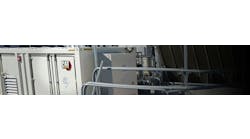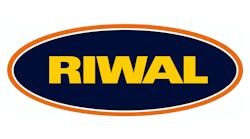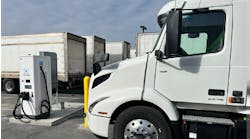Cummins Inc. last week announced the result of a “Fuel Duel” test that confirmed a five-percent fuel efficiency improvement for a Tier 4 Interim QSB6.7 installation compared to an identical machine powered by a Tier 3 engine. The fuel consumption evaluation was conducted under site conditions across a series of duty cycles representative of typical working operations.
The Fuel Duel was undertaken to fully validate previous test results from other Cummins concept installations that have also demonstrated impressive reductions in fuel consumption while meeting EPA Tier 4 Interim and EU Stage IIIB low-emissions standards taking effect in 2011.
Identical front-end loaders in the 190- to 200-hp (142 to 149 kW) class were used as host machines for the Fuel Duel, offering the high engine load factors typical of hardworking equipment. The various duty cycle tests included short and long cycle times with minimal idle time to represent real-world real operation. The machines undertook a sequence of pile breakout and bucket discharge testing, together with repeated sprints and braking.
The 6.7-liter QSB engines competing back-to-back in the Fuel Duel were specified with the same power output, peak torque and rated speed. The higher fuel efficiency of the Tier 4 Interim engine was achieved without compromising machine performance. In fact, the Tier 4 Interim QSB6.7- powered machine completed the Fuel Duel tests within shorter cycle times due to a faster engine response to load demands.
“The results from the Fuel Duel speak for themselves,” said Hugh Foden, Cummins executive director Off-Highway Business. “OEMs can expect lower cost of operation and enhanced productivity from their Cummins-powered equipment while achieving Tier 4 Interim low-emissions standards.”
Both the Tier 3 and Tier 4 Interim-powered machines were operated by the same driver back-to-back with the same bucket size and tire pressure to eliminate any possible variables that could influence the results. Fuel consumption was measured using a special secondary fuel tank mounted on each of the front-end loaders and precisely weighed after each test to record the exact amount of fuel consumed. The five percent fuel savings represented an overall average measured over different duty cycle tests, with each test performed repeatedly to further validate the results.
Cummins has introduced a virtual fuel consumption service available on a consultancy basis for OEMs to predict Tier 4 Interim fuel savings for specific duty cycles and machine types. The analysis work is undertaken by Cummins Virtual Installation Center, recently established to help support OEMs with Tier 4 integration work. Opportunities for fuel savings can be identified for the machine before work commences on the prototype installation.
“We take the fuel map and duty cycle data of the current Tier 3 machine as a starting point,” said Keith Nolting, Cummins’ director industrial applications. “This is used as a basis to build up a predicted fuel consumption across the power curve of the intended Tier 4 Interim-powered machine.”
Columbus, Ind.-based Cummins is a corporation of complementary business units that design, manufacture, distribute and service engines and related technologies, including fuel systems, controls, air handling, filtration, emission solutions and electrical power generation systems.





